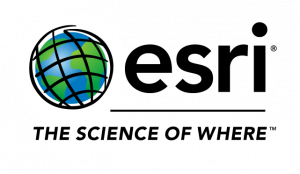Disease surveillance has long been important to preserving the health of people around the world, deterring outbreaks by monitoring the spread of disease and reacting as efficiently as possible. But what if the reaction could occur before the disease spreads at all? Geographic Information Systems (GIS) might be the key.
GIS is an emerging technology that analyzes location by layering data onto maps and 3D displays. Using advanced hardware and software to provide analysis that would have been previously impossible, GIS allows disease surveillance teams to get ahead of the curve using predictive analytics. But the basics of a locational tactic have been around longer than you may think.
“Location intelligence isn’t a new approach,” Este Geraghty, Chief Medical Officer & Health Solutions Director at Esri, said during Thursday’s GovLoop online training. For example, she cited a map used in Italy in 1694 that was used to analyze and contain the spread of the plague. In modern times, however, location intelligence has evolved. “GIS today is a system for managing, analyzing and applying geographic information.”
Geraghty continued on to explain the necessity of GIS in disease surveillance, citing Bill Gates’ claim that a severe flu pandemic could kill more than 33 million people worldwide in 250 days.
With GIS being such a broadly applicable tech, Geraghty and co-presenter Jared Shoultz, Esri’s Health GIS Patterns Specialist, explained the four parts of GIS as they apply to disease surveillance: 1) sourcing data, 2) preparing data, 3) analyzing data and 4) predicting trends.
According to Geraghty, “sourcing data is the building block of a disease surveillance program.” She explained that data can be sourced from a number of methods, with the more common ones being through the electronic death registration system, the national electronic disease surveillance system, lab reports and medical records. A little further down the list are more recent approaches, namely web search analysis and social media crowdsourcing.
“[Web searches and social media crowdsourcing] may be less conventional but can be critical to picking up a signal earlier,” Geraghty said.
Shoultz demonstrated sourcing data by combining data maps offered by a large number of independent sources to layer on desired information for his example disease, influenza.
Geraghty described the second step, preparing data, as the most important part of the GIS process. She explained how to follow the HIPAA privacy rule through the use of aggregation and geomasking, methods used to protect individuals’ identities during data preparation.
In his demonstration, Shoultz modeled data preparation using the random force algorithm, a tool to fill in the blanks on information maps. After filling in the map, he showed the 86 percent accuracy rate of the tool, explaining that he could now, “… see where I have additional data… on a finer scale.”
The next step, analyzing data, followed the “spatial analysis workflow,” which is to use descriptive statistics, test for clustering, determine associations and, finally, take action. Shoultz demonstrated analysis of 3D models, explaining that they included data on both space and time, allowing for the cause of disease to be tracked. The GIS technology provided detailed demographic and census information to create a profile of the area specific enough that it could determine where people shop, what they eat and how active they are.
Finally, after all of the data collection and analysis, GIS takes disease surveillance to where it hasn’t been before: prediction.
“After organizations have discovered data, prepared data and conducted analysis, the next step is using all of this information to start predicting where diseases will spread to and what populations will be impacted so they can be proactive,” Shoultz said. “All of this combined together allows you to consume all these rich sources of information and analytical tools that are available to help make better decisions related to disease surveillance activities.”
Geraghty closed by emphasizing the value of GIS systems in disease surveillance.
“It’s more than a map,” she said, citing analytic, mobile and real-time capabilities. “The potential for disease spread is significant. The geographic approach can offer a deeper understanding.”






Leave a Reply
You must be logged in to post a comment.